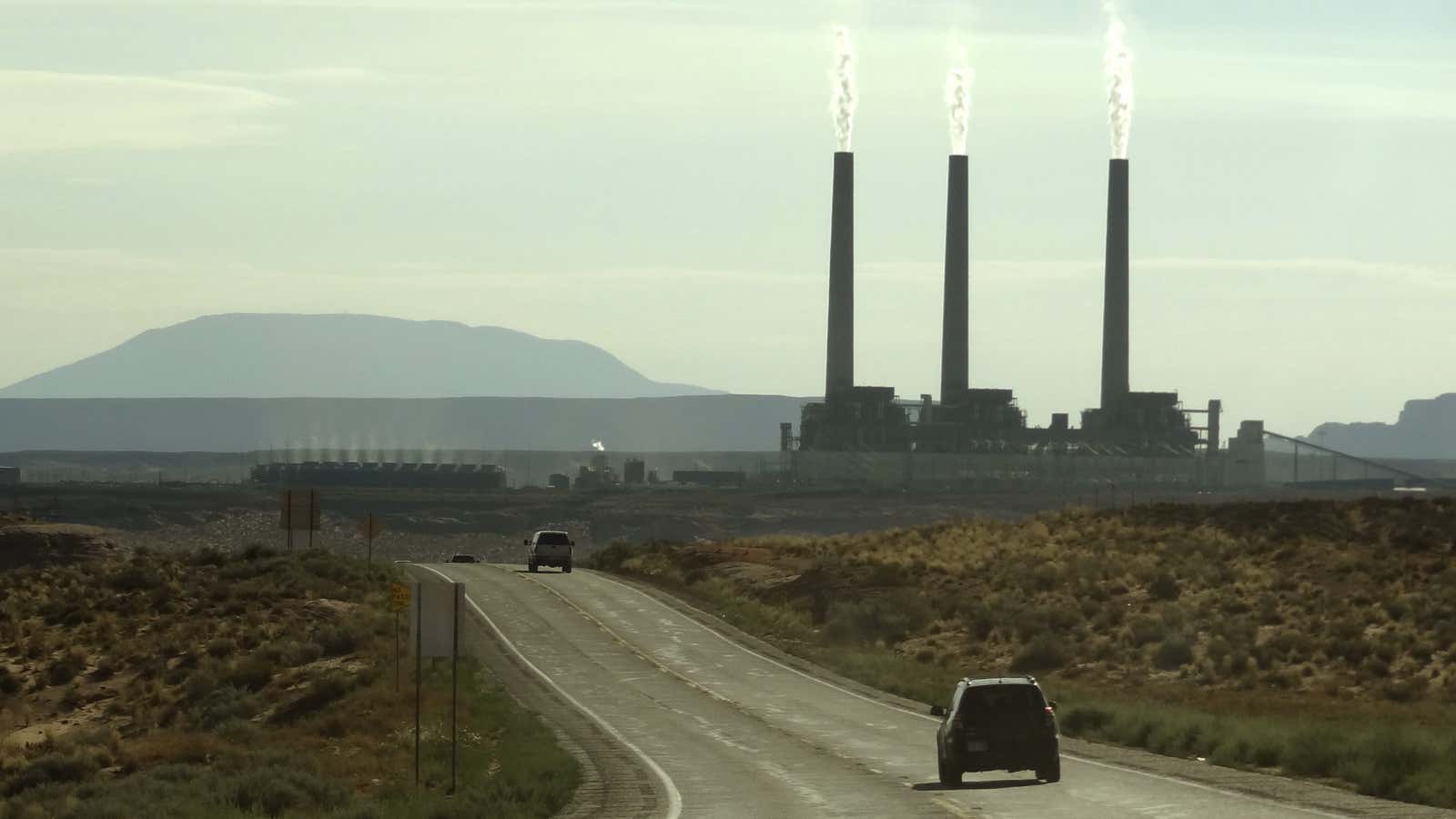First the dirtiest ones began shutting down. Then it was the old ones. Now it’s some of the biggest. America’s coal plants are turning off the boilers, facing brutal economics and customers fleeing for natural gas and renewable energy.
This week, Arizona’s 2.25-GW Navajo Generating Station burned its last load of coal after no buyers turned up during a two-year search. Trade publication Utility Dive reports that the fate of the financially ailing plant was sealed after a bid to force an Arizona water agency to buy its electricity failed. The Navajo station emitted about 20 million metric tons of carbon dioxide each year, equivalent to 3.3 million cars. It’s one of the biggest retirements in a year of massive shutdowns.
The second is Pennsylvania’s 2.7-GW Bruce Mansfield unit. The plant’s bankrupt owner began shutdown on Nov. 7, almost two years ahead of schedule. It was the state’s largest coal-fired plant, operating for 40 years.
Together, the two retirements equal all the emission reductions from coal plant shut-downs in 2015, a record year when 15 GW of mostly smaller and older units were shuttered, reports Scientific American. Last year, 14 GW were mothballed. In 2020, more are on the way, including Kentucky’s Paradise plant.
It’s not climate regulations. It’s economics. “Once you’ve cleared out all the old inefficient stuff, it’s logical the next wave would be bigger and have more implications for the climate,” John Larsen, who leads power-sector analysis at the economic consulting firm Rhodium Group, told Scientific American. As recently as 2007, MIT published research such as The Future of Coal (pdf) suggesting that “coal use will increase under any foreseeable scenario because it is cheap and abundant.” But the cost is no longer so low. Today, natural gas is cheaper than Appalachian coal (although still higher than some western US coal fields) while renewables such as solar and wind are cheaper than anyone had expected.
The US coal industry—hit by slowing electricity demand, customers’ preference for low-carbon energy, and competition from solar, wind, and natural gas—has seen domestic consumption fall plummet since 2000, according to the US Energy Information Administration. Globally coal use has fallen by 2% since 2010.
But even as this trend continues, the industry is not going away. Less coal generation in Europe, China, and the US is being offset by increasing consumption in industrializing countries such as Indonesia, Turkey, and India. And the coal plants still left in the US, many in places like Georgia and Indiana, have advantages ranging from a huge scale (a third larger than those shut down this month) to relatively recent design.
While no new coal plants are likely in the US, no retirement age has been set for America’s largest ones. Market forces will only go so far. In the immediate future, retirements of the biggest existing coal plants, if they occur, will come from even more dramatic price declines from gas and renewables (unlikely), or policies that put an effective price on carbon in industrialized economies.
Rachel Gleason, executive director of the Pennsylvania Coal Alliance, said despite almost two dozen coal plant closures in the state in recent decades, state exports have doubled in recent years to 25% of production (the third-largest in the US). Utilities have also spent billions of dollars updating Pennsylvania’s five remaining plants with no plans to shut down.
Correction: A previous chart showed total coal consumption by commercial and institutional users rather than the electricity sector. This has been corrected.
